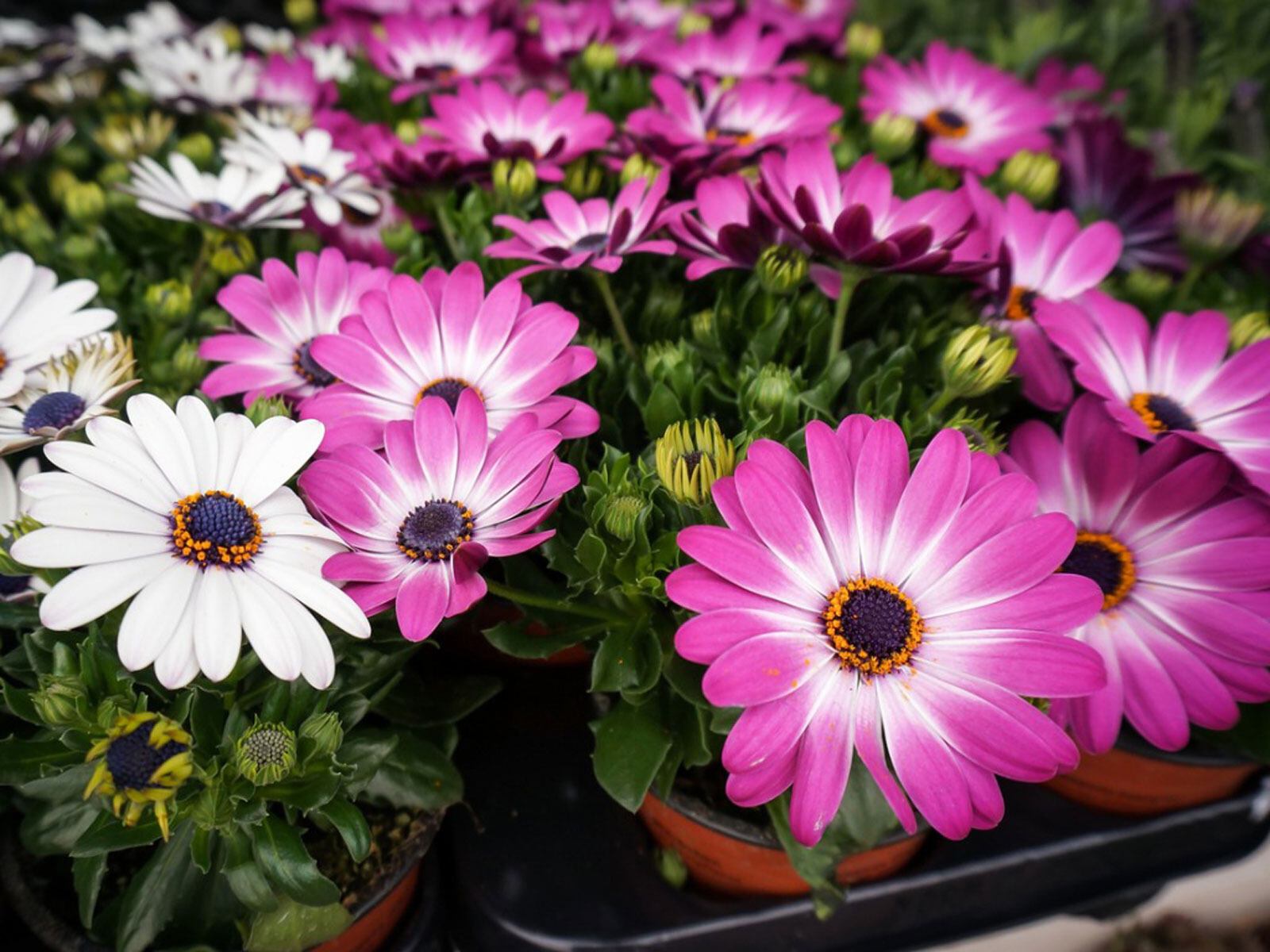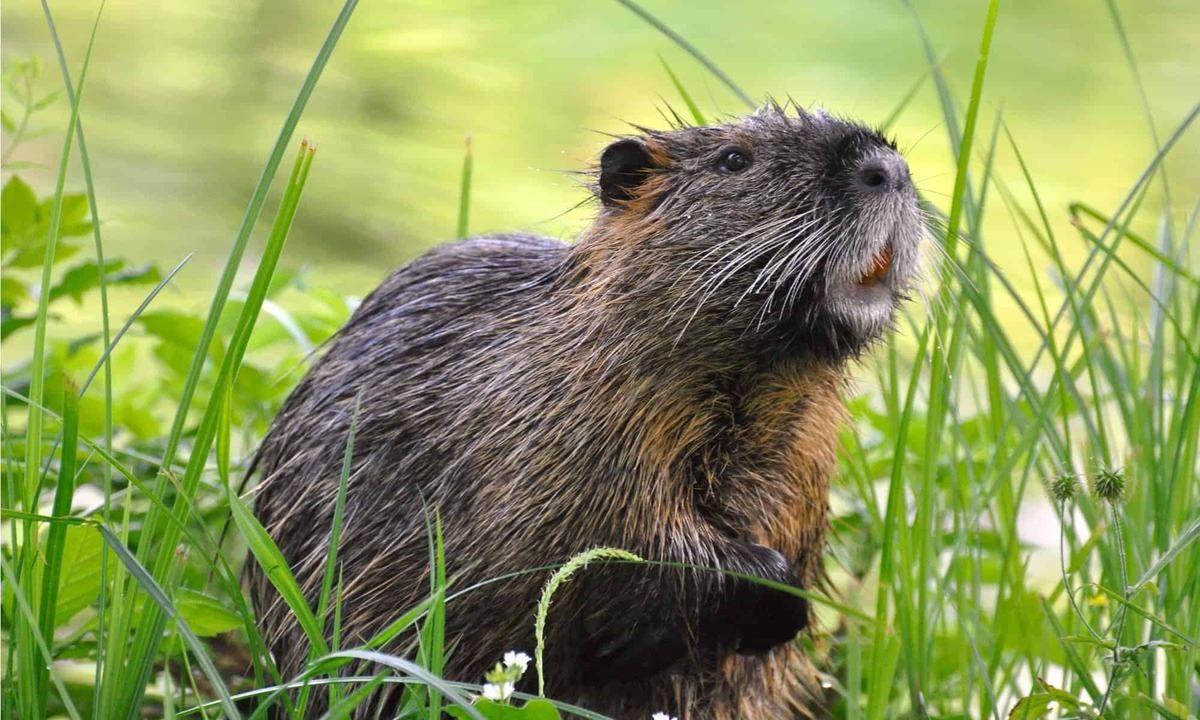
Osteospermum, also known as African daisies or osteos, are vibrant and versatile plants that capture the attention of any garden enthusiast. These stunning flowers are native to southern Africa and are widely celebrated for their unique characteristics and impressive array of colors.
In this article, we will delve into the fascinating world of osteospermum and uncover 18 mind-blowing facts that will surely pique your interest. From their diverse species to their cultivation requirements, we will explore the intriguing aspects of these captivating blooms. Whether you are an avid gardener or simply curious about these remarkable plants, prepare to be amazed by the remarkable features that make osteospermum a true botanical wonder.
Key Takeaways:
- Osteospermum, also known as African daisies, comes in a wide variety of colors and blooms in the morning, making them a vibrant and charming addition to any garden or flowerbed.
- Osteospermum is a hardy and versatile plant that attracts pollinators, repels pests, and symbolizes joy and hope, making it an ideal choice for both beginner and experienced gardeners.
Osteospermum comes in a wide variety of colors.
From vibrant purples and blues to soft pinks and whites, Osteospermum offers a stunning array of colors to choose from. Whether you prefer bold and striking or delicate and pastel, these flowers have something for everyone.
This remarkable flower blooms in the morning and closes at night.
Osteospermum follows the rhythm of the sun, opening up its vibrant petals to greet the day and closing them as night falls. This unique characteristic adds a touch of charm to any garden or flowerbed.
Osteospermum is drought-tolerant.
With its origins in arid regions of South Africa, Osteospermum has evolved to withstand dry conditions. This makes it an excellent choice for those who live in areas with limited water resources or prefer low-maintenance plants.
These flowers are excellent pollinators.
The bright, showy blooms of Osteospermum attract a wide range of pollinators, including bees, butterflies, and hummingbirds. By planting Osteospermum in your garden, you are providing a valuable food source for these essential creatures.
Osteospermum has a long blooming season.
Unlike many other flowers that have a short flowering period, Osteospermum blooms for several months, providing a splash of color and beauty in your garden from spring to fall.
The name “Osteospermum” means “bone seed.”
The name Osteospermum is derived from the Greek words “osteo” meaning bone and “sperma” meaning seed. This name refers to the hard, nut-like seeds produced by the plant.
Osteospermum is a member of the Asteraceae family.
Osteospermum belongs to the Asteraceae family, which also includes familiar flowers like daisies, sunflowers, and asters. This family is known for its composite flower heads, consisting of many tiny individual flowers.
Osteospermum flowers have a daisy-like appearance.
The petals of Osteospermum flowers radiate out from a central disk, giving them a classic daisy-like appearance. This adds a touch of familiarity and nostalgia to their striking beauty.
Osteospermum can be grown in containers.
Whether you have limited outdoor space or prefer to have your plants close at hand, Osteospermum can be cultivated in containers. This makes them a versatile choice for any gardener.
Osteospermum is a great choice for beginner gardeners.
Thanks to their hardiness and easy-to-care-for nature, Osteospermum is an ideal option for those new to gardening. They can withstand a variety of growing conditions and require minimal attention to thrive.
Osteospermum can be used as cut flowers.
The beautiful blooms of Osteospermum can be cut and used in floral arrangements or displayed in vases, bringing their vibrant colors and delicate petals indoors.
Osteospermum is a favorite among butterflies.
Butterflies are highly attracted to the nectar-rich flowers of Osteospermum, making them a delightful addition to butterfly gardens. Watching these graceful creatures flutter around the blooms adds a magical touch to any outdoor space.
Osteospermum flowers can be dried and preserved.
If you want to enjoy the beauty of Osteospermum all year round, you can dry the flowers and use them in dried flower arrangements or crafts. Their vivid colors and unique texture make for stunning decorations.
Osteospermum is a symbol of joy and happiness.
The cheerful and vibrant nature of Osteospermum flowers has led them to become a symbol of joy and happiness. They bring a sense of positivity and optimism to any environment they adorn.
Osteospermum is a natural pest repellent.
These beautiful flowers naturally repel certain pests, such as aphids and whiteflies. By planting Osteospermum in your garden, you can help protect other plants from these unwanted visitors.
The leaves of Osteospermum are edible.
The leaves of Osteospermum can be eaten and used in salads or as a garnish. They have a slightly bitter taste and add a unique twist to culinary creations.
Osteospermum is a versatile landscaping plant.
With their dazzling colors and ability to thrive in various growing conditions, Osteospermum is a popular choice among landscapers. They can be used in flower beds, borders, rock gardens, and even as groundcover.
Osteospermum symbolizes hope and new beginnings.
Throughout history, Osteospermum has been associated with new beginnings and a sense of hope. Planting these flowers in your garden can serve as a reminder of the endless possibilities and fresh starts that await.
These 18 mind-blowing facts about Osteospermum highlight the beauty, versatility, and fascinating characteristics of these remarkable flowers. Whether you are an avid gardener or simply appreciate the wonders of nature, Osteospermum is sure to captivate you with its vibrant colors and remarkable qualities. Add a touch of African splendor to your garden with these magnificent blooms.
Conclusion
Osteospermum, often referred to as the African Daisy, is a remarkable plant that captivates garden enthusiasts and nature lovers alike. With its vibrant colors, unique petal formations, and ability to thrive in various climates, it is no wonder that Osteospermum has gained popularity all over the world.During our exploration into the world of Osteospermum, we uncovered some mind-blowing facts. From its origins in South Africa to its ability to attract pollinators, this plant brings joy and beauty wherever it is grown. Whether you are a seasoned gardener or just starting out, Osteospermum is a must-have addition to your garden.As you embark on your journey with Osteospermum, remember to provide it with the right conditions, such as well-drained soil and plenty of sunlight. With proper care and attention, this extraordinary plant will reward you with stunning blooms and a burst of color that will brighten up any space.
FAQs
1. Can Osteospermum withstand cold temperatures?
Yes, Osteospermum can tolerate cold temperatures, but it is important to protect it from frost. Consider covering the plant or bringing it indoors during colder months.
2. How often should I water my Osteospermum?
Water your Osteospermum regularly, allowing the soil to dry out slightly between waterings. Avoid overwatering, as this can lead to root rot.
3. Do Osteospermum plants attract pollinators?
Absolutely! Osteospermum flowers are rich in nectar and attract bees, butterflies, and other pollinators, making them a great addition to any pollinator garden.
4. Can Osteospermum be grown in containers?
Yes, Osteospermum can be grown in containers. Choose a pot with good drainage, use a well-draining potting mix, and place the container in a sunny location.
5. How long do Osteospermum flowers typically last?
Osteospermum flowers can last for several weeks, providing a beautiful display of colors. Deadheading spent blooms can prolong the flowering period.
6. Are Osteospermum plants deer-resistant?
Osteospermum is known to be deer-resistant, making it a great choice for gardens where deer may be a problem.
7. Are there any special pruning requirements for Osteospermum?
Osteospermum generally requires minimal pruning. However, you can remove spent blooms or trim back leggy growth to promote a more compact and bushy plant.
8. Can Osteospermum be propagated from cuttings?
Yes, Osteospermum can be easily propagated from cuttings. Take stem cuttings in spring or early summer, dip them in rooting hormone, and plant them in a well-draining mix.
9. Does Osteospermum require any special fertilizer?
Osteospermum can benefit from a balanced, slow-release fertilizer applied in early spring. Be sure to follow the instructions on the product label for best results.
10. Can Osteospermum be grown indoors?
While Osteospermum is typically grown outdoors, it can be grown indoors in a sunny, well-lit location. Ensure proper air circulation and maintain consistent moisture levels.
Was this page helpful?
Our commitment to delivering trustworthy and engaging content is at the heart of what we do. Each fact on our site is contributed by real users like you, bringing a wealth of diverse insights and information. To ensure the highest standards of accuracy and reliability, our dedicated editors meticulously review each submission. This process guarantees that the facts we share are not only fascinating but also credible. Trust in our commitment to quality and authenticity as you explore and learn with us.


